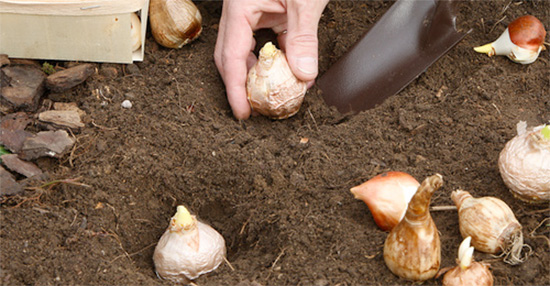If you like a garden with colour and atmosphere, why not plant flower bulbs this autumn so you can enjoy colourful flowers in the spring. Here are six tips to get you started!
Tip 1: location
Many flower bulbs thrive under shrubs and trees. They get less rain and light there in winter because of the fallen leaves, and flower bulbs like it this way during the cold season. After flowering, the trees and shrubs grow their foliage again and the bulbs go dormant. During the hot summer months, the leaves of the trees and shrubs keep the bulbs pleasantly cool.
Tip 2: ‘wow’ effect
If you want to create a ‘wow’ effect in your garden early in spring, don’t hold back: plant bulbs in large clusters. The more bulbs, the more spectacular the effect! There are so many options: a large number of mixed varieties and colours, a cluster of the same type of bulbs in different colours, or bulbs of one and the same variety and colour.
Tip 3: pots
You don’t need a garden to be able to enjoy spring-flowering bulbs. Planting flower bulbs in pots and containers gives everyone a chance to enjoy the bright, cheerful colours of these stunning flowers. Plant the bulbs in odd numbers for a natural effect. Do provide some holes in the bottom of the pot to allow excess water to drain away.
Tip 4: metamorphosis
Don’t let the appearance of flower bulbs fool you. It may seem impossible that stunning flowers will grow from the often unusual-looking bulbs and tubers. But it’s true! Once the bulbs start growing, they undergo a true metamorphosis, not unlike caterpillars turning into butterflies.
Tip 5: perennial
Some flower bulbs flower for a season, but there are also varieties that flower every year. These are called perennial bulbs or naturalising bulbs. These bulbs can be left in the ground, as doing so makes the bulbs larger and stronger. In fact, naturalising bulbs even create new bulbs so they will grow in number each year.
Tip 6: layers
Plant bulbs in layers on top of each other; this is called lasagne or tiered planting. Since the flower bulbs are planted in layers, the earliest to bloom, such as crocuses, will emerge first. These will then be followed by the flower bulbs that will flower later. This successive flowering means that you can enjoy the results for a long time: from January until May, depending on the kinds of bulbs you plant.





